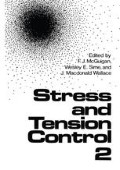Abstract
This paper outlines the ways in which methods of stress control have been used by educational psychologists and allied professional groups over a period of six years. Reference is made to individual case studies. Limitations are considered, and alternate strategies suggested for some difficult-to-help pupils
Access this chapter
Tax calculation will be finalised at checkout
Purchases are for personal use only
Preview
Unable to display preview. Download preview PDF.
References
Abromowitz, SI., and Wieselberg, N., 1978, Reaction to relaxation and desensitization outcome: five angry treatment failures, Am. J. Psychiat;, 135:1418–1419
Amerikaner, M., and Summerling, ML., 1982, Group counseling with learning disabled children: effects of social skills and relaxation training on self-concept and classroom behaviour, J. Learn. Disab., 15:6
Apter, M. J., 1982, “The Experience of Motivation: The Theory of Psychological Reversals”, Academic Press, London
Borkovec, T. D., and Heidi, F., 1980, Relaxation-induced anxiety: psychophysiological evidence of anxiety-enhancement in tense subjects practicing relaxation, presented at: the Annual Meeting of the Association for the Advancement of Behavior Therapy, New York
Cade, BW ., 1980, Resolving therapeutic deadlocks using a contrived team conflict, Int. J. Fam. Th., 2:4
Clayton, T,, 1982, The behaviour modification workshop: an antidote to mindless technology, Behav. Appr. with Children, 6:2
Cobb, DE., and Evans, JR., 1981, The use of biofeedback techniques with school-aged children exhibiting behavioral and/or learning problems, J. Abn. Chld. Psychol., 9:2
Collins, T., and Hfodgkinson, P., 1982, Biofeedback, behavioural counselling and temper control, New Growth, 2: 1
Cowell, D., 1981, Stealing - A brief guide for teachers, Links, 7: 1
Cowell, D., 1982, The use of hypnosis and allied procedures in counselling secondary school pupils, presented at: Fortieth Annual Convention - International Council of Psychologists, University of Southampton, England
Cowell, D ., 1982, A model screening procedure, AEP Journ., 5:8
Cowell, D., 1983, Relaxation-training for parents of handicapped children, AEP Journ., (In press)
Cowell, D., 1983, The use of an implosive therapy method to create ’realistic anxiety’ in the counselling of a secondary school pupil who set fires, (unpublished)
Daws, P. P., 1976, “Early Days,” CRAC Hobson, Cambridge, pp. 15,44, 46
Delman, RP ., 1975, Biofeedback and progressive relaxation: a comparison of psychophysiological effects, (Abstract of unpublished Ph. D. thesis), Dissert. Abstr., 1976, 36B, 4150
Drucker, P. F., 1967, The Effective Executive, Heinemann, London
Dunn, DM., and Howell, RJ., 1982, Relaxation training and its relation to hyperactivity in boys., J. Clin. Psych_ol., 38:1
Gath, A., 1978, “Down’s Syndrome and the Family, the Early Years,” Academic Press, London
Hare, R. D., and Schalling, D., 1978, “Psychopathic Behaviour,” Wiley, Chichester
Hartland, J., 1971, “Medical and Dental Hypnosis and its Clinical Applications,” Balliere Tindall, London
Kozloff, A., 1979, “A Program for Families of Children with Learning and Behaviour Problems,” Wiley, Chichester
Lago, CO ., 1981, Systematic desensitization: a case history including some developments in the use of fantasy, Brit J. Guid. and Counselling, 9:1
Lehrer, P. M., 1979, Anxiety and cultivated relaxation: reflections on clinical experiences and pyschophysiological research, in: “Tension Control, Proceedings of the Fifth Annual Meeting of the American Association for the Advancement of Tension Control,” F. J. McGuigan, ed., AAATC, Chicago
Lehrer, PM ., 1982, How to relax and not to relax: A re-evaluation of the work of Edmund Jacobson - I, Behav. Res. Ther., 20:417-428
Levis, D. J., 1908, Implementing the technique of implosive therapy, in: “Handbook of Behavioral Interventions,” A. Goldstein and E. B. Foa, eds., Wiley, Chichester. Mason, J. L., 1980, “Guide to Stress Reduction,” Peace Press, Culver City
Miller, WR ., 1983, Motivational interviewing with problem drinkers, Behav. Psycho. Th., 11:147-172
Mitchell, S., and Rosa, P., 1981, Boyhood behaviour problems as precursors of criminality: a fifteen year follow-up study, J. Child. Psychol..Psychiat., 22:19-33
Norfolk, N., 1979, “The Stress Factor,” Hamlyn, London
Omizo, MM., and Michael, WB., 1982, Biofeedback induced relaxation training and impulsivity, attention to task and locus of control among hyperactive boys, J. Learn. Disab., 15:7
Parrino, J. J., 1979, From Panic to Power, Wiley, Chichester. Ross, P. J., 1981, private communication
Rosa, K. R., 1976, “Autogenic Training,” Gollancz, London
Smith, TW., and Denney, DR., 1983, Relaxation training in the reduction of traumatic headaches: a case study, Behav. Psychotherapy, 11:109-115
Stewart, MA., De Blois, CS., and Cummings, C., 1980, Psychiatric disorder in the parents of hyperactive boys and those with conduct disorder., J. Child. Psychol. Psychiat., 21: 283-292
Van der Hoever, J., 1978, ’TS-1-ant-Eyed Angel,“ ed Angel,” Smythe Gerrards Cross
West, D. J., 1982, Delinquency, Its Roots, Careers and Prospects, Heinemann, London
Westmacott, E. V. S., and Cameron, R. J., 1981, “Behaviour Can Change,” Globe, Basingstoke
Wilks, J., and Eileen B., 1974, “Bringing up our Mongol Son,” Routledge and Kegan Paul, London
Winfield, I ., 1983, Counselling with biofeedback: a review, Brit J. Guid. and Counselling,, 11:1
Author information
Authors and Affiliations
Editor information
Editors and Affiliations
Rights and permissions
Copyright information
© 1984 Plenum Press, New York
About this chapter
Cite this chapter
Cowell, D. (1984). Some Uses and Limitations of Stress Control Methods in a Local Authority Educational Psychology Service. In: McGuigan, F.J., Sime, W.E., Wallace, J.M. (eds) Stress and Tension Control 2. Springer, Boston, MA. https://doi.org/10.1007/978-1-4613-2803-2_27
Download citation
DOI: https://doi.org/10.1007/978-1-4613-2803-2_27
Publisher Name: Springer, Boston, MA
Print ISBN: 978-1-4612-9726-0
Online ISBN: 978-1-4613-2803-2
eBook Packages: Springer Book Archive

